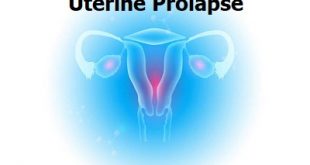Overview
Urinary incontinence (UI) is leaking of urine that you can’t control. Many American men and women suffer from urinary incontinence. We don’t know for sure exactly how many. That’s because many people do not tell anyone about their symptoms. They may be embarrassed, or they may think nothing can be done. So they suffer in silence.
Urinary incontinence is not just a medical problem. It can affect emotional, psychological and social life. Many people who have urinary incontinence are afraid to do normal daily activities. They don’t want to be too far from a toilet. Urinary incontinence can keep people from enjoying life.
Many people think urinary incontinence is just part of getting older. But it’s not. And it can be managed or treated. Learn more here. Talk to your doctor. Find out what treatment is best for you.
What are the types of urinary incontinence (UI)?
There are several different types of UI. Each type has different symptoms and causes:
- Stress incontinence happens when stress or pressure on your bladder causes you to leak urine. This could be due to coughing, sneezing, laughing, lifting something heavy, or physical activity. Causes include weak pelvic floor muscles and the bladder being out of its normal position.
- Urge, or urgency, incontinence happens when you have a strong urge (need) to urinate, and some urine leaks out before you can make it to the toilet. It is often related to an overactive bladder. Urge incontinence is most common in older people. It can sometimes be a sign of a urinary tract infection (UTI). It can also happen in some neurological conditions, such as multiple sclerosis and spinal cord injuries.
- Overflow incontinence happens when your bladder doesn’t empty all the way. This causes too much urine to stay in your bladder. Your bladder gets too full, and you leak urine. This form of UI is most common in men. Some of the causes include tumors, kidney stones, diabetes, and certain medicines.
- Functional incontinence happens when a physical or mental disability, trouble speaking, or some other problem keeps you from getting to the toilet in time. For example, someone with arthritis may have trouble unbuttoning his or her pants, or a person with Alzheimer’s disease may not realize they need to plan to use the toilet.
- Mixed incontinence means that you have more than one type of incontinence. It’s usually a combination of stress and urge incontinence.
- Transient incontinence is urine leakage that is caused by a temporary (transient) situation such as an infection or new medicine. Once the cause is removed, the incontinence goes away.
- Bedwetting refers to urine leakage during sleep. This is most common in children, but adults can also have it.
- Bedwetting is normal for many children. It is more common in boys. Bedwetting is often not considered a health problem, especially when it runs in the family. But if it still happens often at age 5 and older, it may be because of a bladder control problem. This problem could be caused by slow physical development, an illness, making too much urine at night, or another problem. Sometimes there is more than one cause.
- In adults, the causes include some medicines, caffeine, and alcohol. It can also be caused by certain health problems, such as diabetes insipidus, a urinary tract infection (UTI), kidney stones, enlarged prostate (BPH), and sleep apnea.
Pathophysiology
Micturition requires coordination of several physiological processes. Somatic and autonomic nerves carry bladder volume input to the spinal cord, and motor output innervating the detrusor, sphincter, and bladder musculature is adjusted accordingly. The cerebral cortex exerts a predominantly inhibitory influence, whereas the brainstem facilitates urination by coordinating urethral sphincter relaxation and detrusor muscle contraction.
As the bladder fills, sympathetic tone contributes to closure of the bladder neck and relaxation of the dome of the bladder and inhibits parasympathetic tone. At the same time, somatic innervation maintains tone in the pelvic floor musculature as well as the striated periurethral muscles.
When urination occurs, sympathetic and somatic tones in the bladder and periurethral muscles diminish, resulting in decreased urethral resistance. Cholinergic parasympathetic tone increases, resulting in bladder contraction. Urine flow results when bladder pressure exceeds urethral resistance. Normal bladder capacity is 300-500 mL, and the first urge to void generally occurs between bladder volumes of 150 and 300 mL.
Incontinence occurs when micturition physiology, functional toileting ability, or both have been disrupted. The underlying pathology varies among the different types of incontinence (ie, stress, urge, mixed, reflex, overflow, and functional incontinence).
What causes incontinence?
There are many different reasons that you could experience incontinence. These causes can vary depending on if you’re a woman or man. Some causes are temporary health conditions that usually go away once treated. In those cases, your incontinence also usually stops once the condition is treated. Incontinence can be caused by long-term (chronic) medical conditions. When you experience leakage issues because of a chronic condition, it’s usually something you will have to manage over a longer period of time. Even with treatment, chronic conditions usually don’t go away. Incontinence may have to be managed over time as a symptom of your chronic condition.
Temporary or short-term causes of incontinence can include:
- Urinary tract infections (UTIs): An infection inside your urinary tract (urethra, ureters, bladder and kidneys) can cause pain and increase your need to pee more often. Once treated, the urge to urinate frequently usually goes away.
- Pregnancy: During pregnancy, your uterus places extra pressure on the bladder as it expands. Most women who experience incontinence during pregnancy notice that it goes away in the weeks after delivery.
- Medications: Incontinence can be a side effect of certain medications, including diuretics and antidepressants.
- Beverages: There are certain drinks — like coffee and alcohol — that can make you need to urinate much more often. If you stop drinking these beverages, your need to urinate frequently typically goes down.
- Constipation: Chronic constipation (stool that’s hard and dry) can cause you to have bladder control issues.
Chronic or long-term causes of incontinence can include:
- Pelvic floor disorders: When you have an issue with your pelvic floor muscles, it can impact the way your organs function, including your bladder.
- Stroke: A stroke can cause you to experience issues with muscle control. This can include the muscles that control your urinary system.
- Diabetes: When you have diabetes, your body produces more urine. This increase in the amount of urine can cause leakage issues. In addition, peripheral neuropathy can affect the bladder’s function.
- Menopause: Menopause is another time of change in a woman’s body when hormone levels change rapidly and pelvic floor muscles can also become weaker — something that also can happen as you get older.
- Multiple sclerosis (MS): If you have MS, you may experience a loss of control with your bladder, leading to leakage issues.
- Enlarged prostate: When the prostate is larger than normal, it can cause several bladder control issues. You might also hear this condition called benign prostatic hyperplasia, or BPH.
- After prostate cancer surgery: During prostate cancer surgery the sphincter muscle can sometimes be damaged leading to stress incontinence.
Risk Factors for Urinary Incontinence
The following factors may put you at higher risk for developing UI.
- Being female: Women experience stress incontinence twice as often as men. Men, on the other hand, are at greater risk for urge and overflow incontinence.
- Advancing age: As we get older, our bladder and urinary sphincter muscles often weaken, which may result in frequent and unexpected urges to urinate. Even though incontinence is more common in older people, it is not considered a normal part of aging.
- Excess body fat: Extra body fat increases the pressure on the bladder and can lead to urine leakage during exercise or when coughing or sneezing.
- Other chronic diseases: vascular disease, kidney disease, diabetes, prostate cancer, Alzheimer’s disease, multiple sclerosis, Parkinson’s disease, and other conditions may increase the risk of urinary incontinence.
- Smoking: A chronic smoker’s cough can trigger or aggravate stress incontinence by putting pressure on the urinary sphincter.
- High-impact sports: While sports don’t cause incontinence, running, jumping, and other activities that create sudden pressure on the bladder can lead to occasional episodes of incontinence during sports activities.
Signs and Symptoms of Urinary Incontinence
The following are signs you should see a doctor:
- Leaking urine during normal activities like lifting, bending, coughing, or exercising
- Sudden, strong urges to urinate; feeling like you might not make it to the toilet in time
- Leaking urine without feeling any warning sign or urge
- Bed-wetting
Complications of Urinary Incontinence
Complications of chronic urinary incontinence include:
- Skin problems. Rashes, skin infections and sores can develop from constantly wet skin.
- Urinary tract infections. Incontinence increases your risk of repeated urinary tract infections.
- Impacts on your personal life. Urinary incontinence can affect your social, work and personal relationships.
How is urinary incontinence diagnosed?
To diagnose the cause of your urinary incontinence, your doctor will do a physical exam and ask about your past health.
Your doctor will ask about what and how much you drink. You will also be asked how much and how often you urinate and leak urine. It may be easier for you to answer questions if you keep track of these things using a bladder diary for 3 or 4 days before you see your doctor.
Your doctor may do some simple tests to look for the cause of your bladder control problem. For example, your doctor may ask you to cough while you are standing to see if you leak urine. If your doctor thinks that your problem may have more than one cause, you will likely have more tests.
Here are some tests that may be done to find the type and cause of your urinary incontinence.
- Urinalysis and urine culture. These tests show whether you have a urinary tract infection (UTI) or blood or sugar in your urine. It can also show if a man has prostatitis.
- Bladder stress test. It simulates the accidental release of urine that may occur when you cough, sneeze, laugh, or exercise. Women may also get a Bonney test. It’s similar to the bladder stress test, but the bladder neck is lifted slightly with a finger or tool inserted into the vagina while the bladder stress is applied.
- Pad test. This can help show how much urine is leaking. You are given an absorbent pad that has been weighed. You wear the pad until urine leaks, and then you return the pad to be weighed again. The increased weight of the pad gives an estimate of how much urine leaked.
- X-rays or ultrasound. These are used to examine changes in the position of the bladder and urethra when you urinate, cough, or strain.
- Urodynamic testing. It is typically done only if surgery is being considered or if treatment has not worked for you. The tests may include:
- Uroflowmetry. This test measures your rate of urine flow. A low peak flow rate can be a sign of a blockage or a weak bladder.
- Pressure flow studies. This testing measures pressure changes in the bladder as the flow changes. It’s often used when the cause of your symptoms isn’t clear. It can help show if the cause may be a blockage or a problem with the bladder muscles or nerves.
- Post-void residual volume. This test measures the amount of urine left after you empty your bladder.
- Cystometry. This is a series of tests to measure bladder pressure at different levels of fullness.
- Electromyogram (EMG). This test records the electrical activity of muscles.
- Cystoscopic exam. This is a test that allows your doctor to see inside the urinary tract by using a thin, lighted tube.
- Cystourethrogram. This is an X-ray of your bladder and urethra while you are urinating.
Treatment of Urinary Incontinence
Treatment for urinary incontinence depends on the type of incontinence, its severity and the underlying cause. A combination of treatments may be needed. If an underlying condition is causing your symptoms, your doctor will first treat that condition.
Your doctor may recommend less invasive treatments to start with and move on to other options if these techniques fail to help you.
Behavioral techniques
Your doctor may recommend:
- Bladder training, to delay urination after you get the urge to go. You may start by trying to hold off for 10 minutes every time you feel an urge to urinate. The goal is to lengthen the time between trips to the toilet until you’re urinating only every 2.5 to 3.5 hours.
- Double voiding, to help you learn to empty your bladder more completely to avoid overflow incontinence. Double voiding means urinating, then waiting a few minutes and trying again.
- Scheduled toilet trips, to urinate every two to four hours rather than waiting for the need to go.
- Fluid and diet management, to regain control of your bladder. You may need to cut back on or avoid alcohol, caffeine or acidic foods. Reducing liquid consumption, losing weight or increasing physical activity also can ease the problem.
Pelvic floor muscle exercises
Your doctor may recommend that you do these exercises frequently to strengthen the muscles that help control urination. Also known as Kegel exercises, these techniques are especially effective for stress incontinence but may also help urge incontinence.
To do pelvic floor muscle exercises, imagine that you’re trying to stop your urine flow. Then:
- Tighten (contract) the muscles you would use to stop urinating and hold for five seconds, and then relax for five seconds. (If this is too difficult, start by holding for two seconds and relaxing for three seconds.)
- Work up to holding the contractions for 10 seconds at a time.
- Aim for at least three sets of 10 repetitions each day.
To help you identify and contract the right muscles, your doctor may suggest that you work with a pelvic floor physical therapist or try biofeedback techniques.
Medications
Medications commonly used to treat incontinence include:
- Anticholinergics. These medications can calm an overactive bladder and may be helpful for urge incontinence. Examples include oxybutynin (Ditropan XL), tolterodine (Detrol), darifenacin (Enablex), fesoterodine (Toviaz), solifenacin (Vesicare) and trospium chloride.
- Mirabegron (Myrbetriq). Used to treat urge incontinence, this medication relaxes the bladder muscle and can increase the amount of urine your bladder can hold. It may also increase the amount you are able to urinate at one time, helping to empty your bladder more completely.
- Alpha blockers. In men who have urge incontinence or overflow incontinence, these medications relax bladder neck muscles and muscle fibers in the prostate and make it easier to empty the bladder. Examples include tamsulosin (Flomax), alfuzosin (Uroxatral), silodosin (Rapaflo), and doxazosin (Cardura).
- Topical estrogen. Applying low-dose, topical estrogen in the form of a vaginal cream, ring or patch may help tone and rejuvenate tissues in the urethra and vaginal areas.
Electrical stimulation
Electrodes are temporarily inserted into your rectum or vagina to stimulate and strengthen pelvic floor muscles. Gentle electrical stimulation can be effective for stress incontinence and urge incontinence, but you may need multiple treatments over several months.
Medical devices
Devices designed to treat women with incontinence include:
- Urethral insert, a small, tampon-like disposable device inserted into the urethra before a specific activity, such as tennis, that can trigger incontinence. The insert acts as a plug to prevent leakage and is removed before urination.
- Pessary, a flexible silicone ring that you insert into your vagina and wear all day. The device is also used in women with vaginal prolapse. The pessary helps support the urethra, to prevent urine leakage.
Interventional therapies
Interventional therapies that may help with incontinence include:
- Bulking material injections. A synthetic material is injected into tissue surrounding the urethra. The bulking material helps keep the urethra closed and reduce urine leakage. This procedure is for the treatment of stress incontinence and is generally less effective than more-invasive treatments such as surgery. It may need to be repeated more than once.
- OnabotulinumA (Botox). Injections of Botox into the bladder muscle may benefit people who have an overactive bladder and urge incontinence. Botox is generally prescribed to people only if other treatments haven’t been successful.
- Nerve stimulators. There are two types of devices that use painless electrical pulses to stimulate the nerves involved in bladder control (sacral nerves). One type is implanted under your skin in your buttock and connected to wires on the lower back. The other type is a removable plug that is inserted into the vagina. Stimulating the sacral nerves can control overactive bladder and urge incontinence if other therapies haven’t worked.
Surgery
If other treatments aren’t working, several surgical procedures can treat the problems that cause urinary incontinence:
- Sling procedures. Synthetic material (mesh) or strips of your body’s tissue are used to create a pelvic sling underneath your urethra and the area of thickened muscle where the bladder connects to the urethra (bladder neck). The sling helps keep the urethra closed, especially when you cough or sneeze. This procedure is used to treat stress incontinence.
- Bladder neck suspension. This procedure is designed to provide support to your urethra and bladder neck — an area of thickened muscle where the bladder connects to the urethra. It involves an abdominal incision, so it’s done during general or spinal anesthesia.
- Prolapse surgery. In women who have pelvic organ prolapse and mixed incontinence, surgery may include a combination of a sling procedure and prolapse surgery. Repair of pelvic organ prolapse alone does not routinely improve urinary incontinence symptoms.
- Artificial urinary sphincter. A small, fluid-filled ring is implanted around the bladder neck to keep the urinary sphincter shut until there’s a need to urinate. To urinate, you press a valve implanted under your skin that causes the ring to deflate and allows urine from your bladder to flow.
Absorbent pads and catheters
If medical treatments can’t eliminate your incontinence, you can try products that help ease the discomfort and inconvenience of leaking urine:
- Pads and protective garments. Most products are no more bulky than normal underwear and can be easily worn under everyday clothing. Men who have problems with dribbles of urine can use a drip collector — a small pocket of absorbent padding that’s worn over the penis and held in place by close-fitting underwear.
- Catheter. If you’re incontinent because your bladder doesn’t empty properly, your doctor may recommend that you learn to insert a soft tube (catheter) into your urethra several times a day to drain your bladder. You’ll be instructed on how to clean these catheters for safe reuse.
Preventing Urinary Incontinence
It’s not always possible to prevent urinary incontinence, but there are some steps you can take that may help reduce the chance of it happening.
These include:
- maintaining a healthy weight
- avoiding or cutting down on alcohol
- staying active – in particular, ensuring that your pelvic floor muscles are strong
Healthy weight
- Being obese can increase your risk of urinary incontinence. You may be able to lower your risk by maintaining a healthy weight through regular exercise and healthy eating.
- Use the healthy weight calculator to see if you are a healthy weight for your height.
- Get more information and advice about losing weight.
Drinking habits
- Depending on your particular bladder problem, a GP can advise you about the amount of fluids you should drink.
- If you have urinary incontinence, cut down on alcohol and drinks containing caffeine, such as tea, coffee and cola. These can cause your kidneys to produce more urine and irritate your bladder.
- The recommended weekly limit for alcohol consumption is 14 units.
- A unit of alcohol is roughly half a pint of normal strength lager or a single measure (25ml) of spirits.
- Find out more about alcohol units.
- If you have to urinate frequently during the night (nocturia), try drinking less in the hours before you go to bed. However, make sure you still drink enough fluids during the day.
Pelvic floor exercises
- Being pregnant and giving birth can weaken the muscles that control the flow of urine from your bladder. If you’re pregnant, strengthening your pelvic floor muscles may help prevent urinary incontinence.
- Find out more about exercise during pregnancy.
- Everyone may benefit from strengthening their pelvic floor muscles with pelvic floor exercises.
 Diseases Treatments Dictionary This is complete solution to read all diseases treatments Which covers Prevention, Causes, Symptoms, Medical Terms, Drugs, Prescription, Natural Remedies with cures and Treatments. Most of the common diseases were listed in names, split with categories.
Diseases Treatments Dictionary This is complete solution to read all diseases treatments Which covers Prevention, Causes, Symptoms, Medical Terms, Drugs, Prescription, Natural Remedies with cures and Treatments. Most of the common diseases were listed in names, split with categories.







